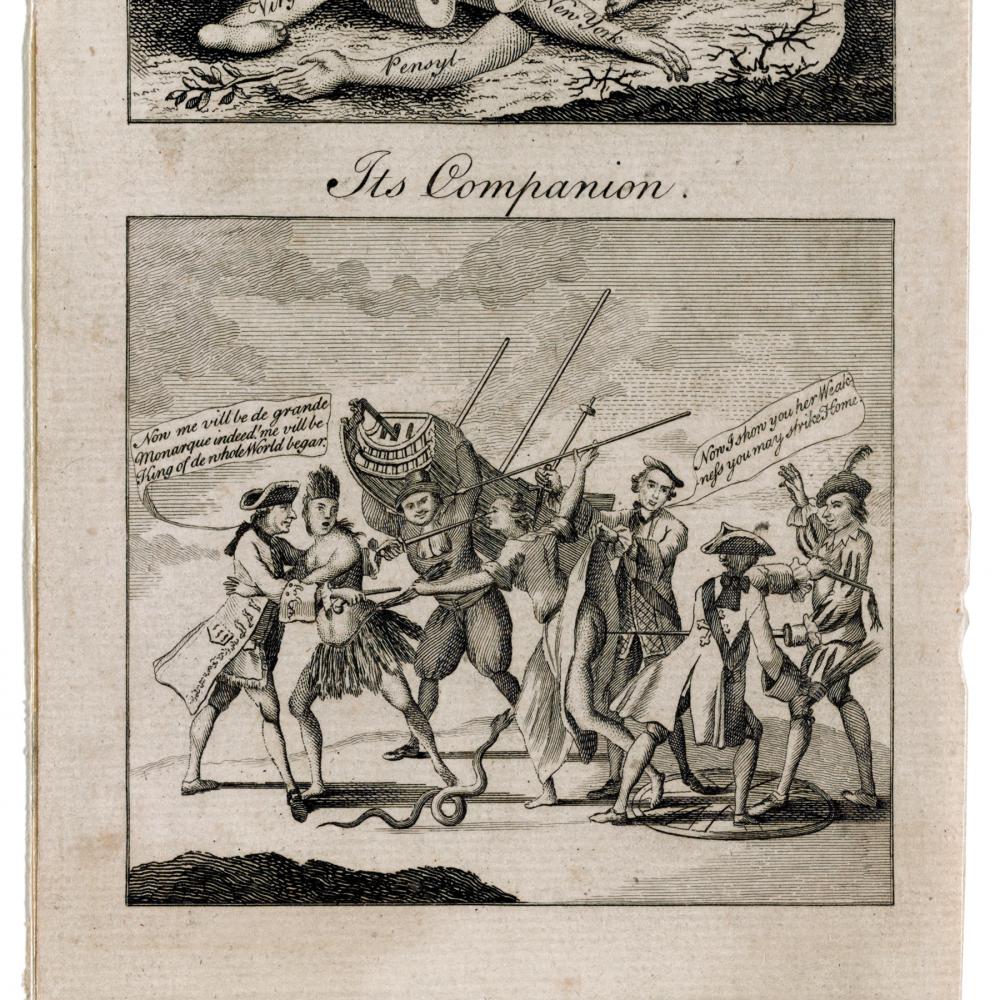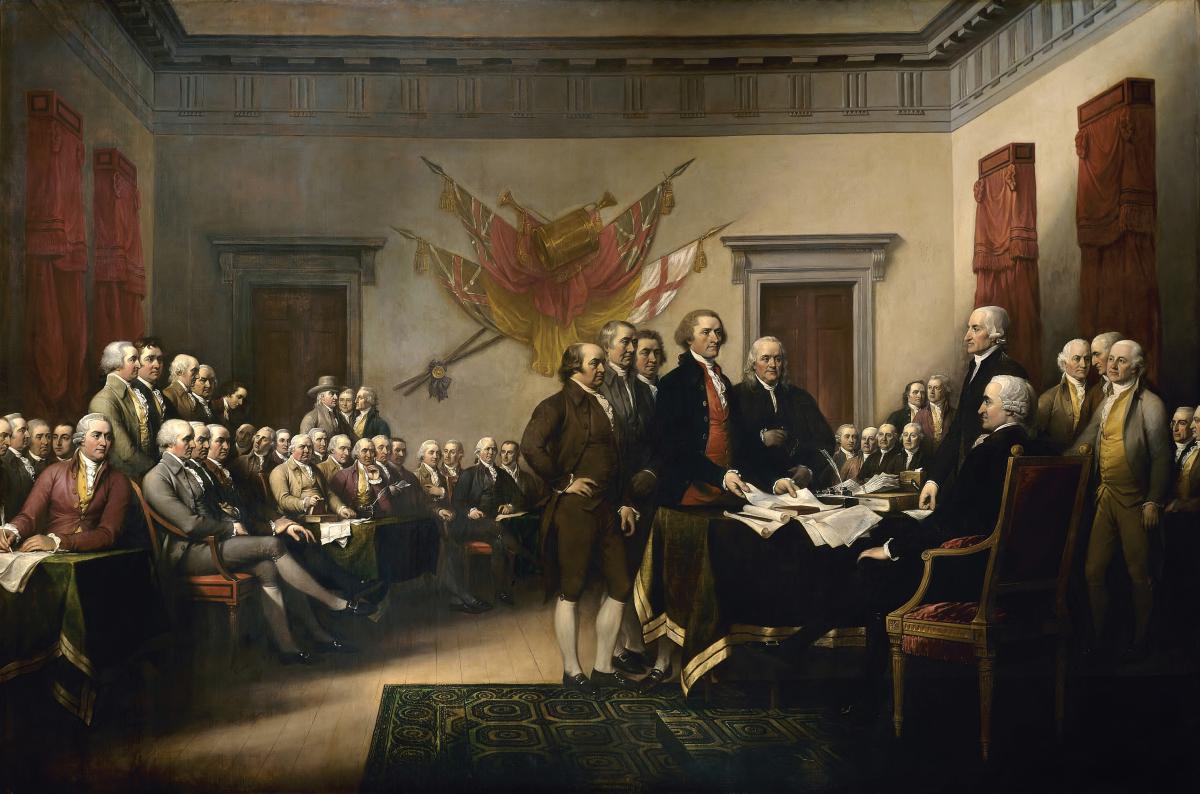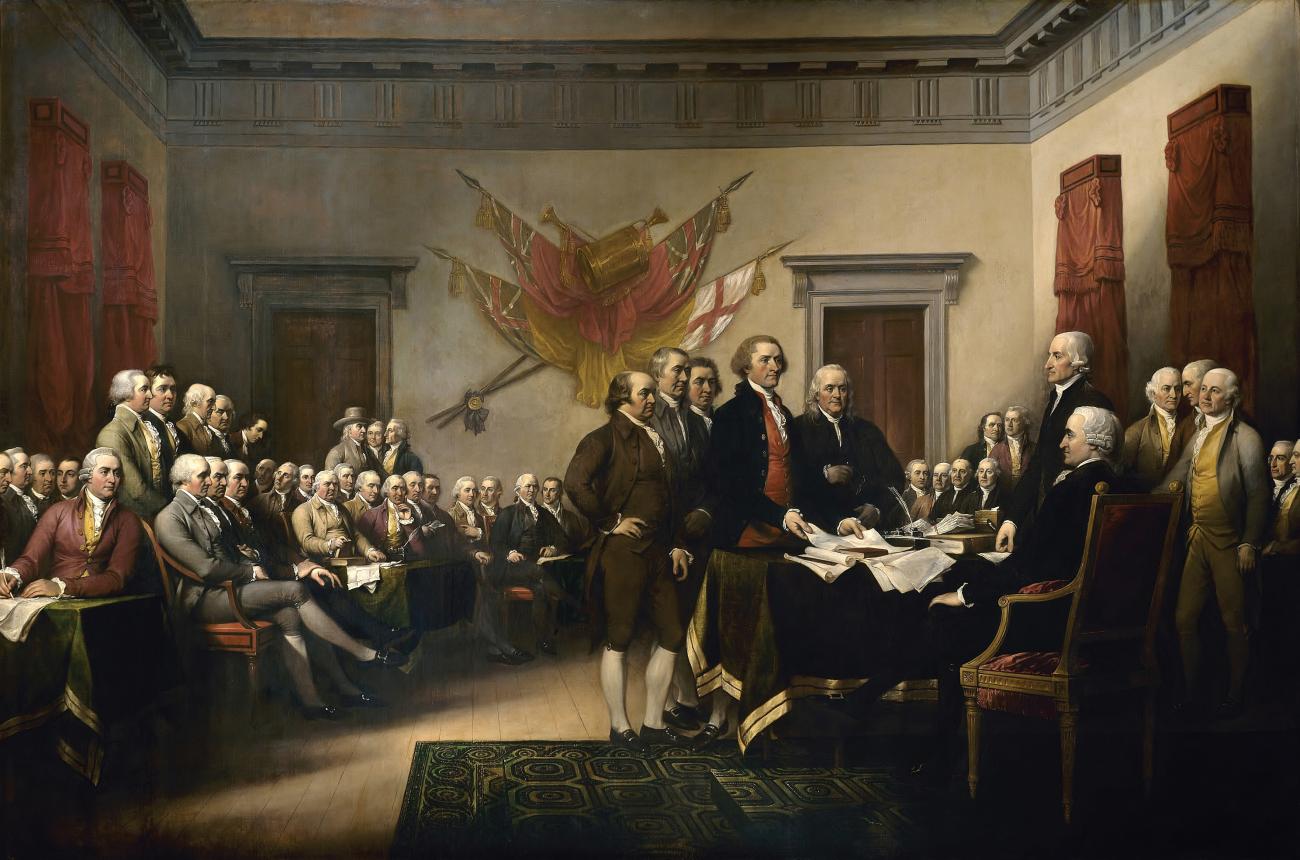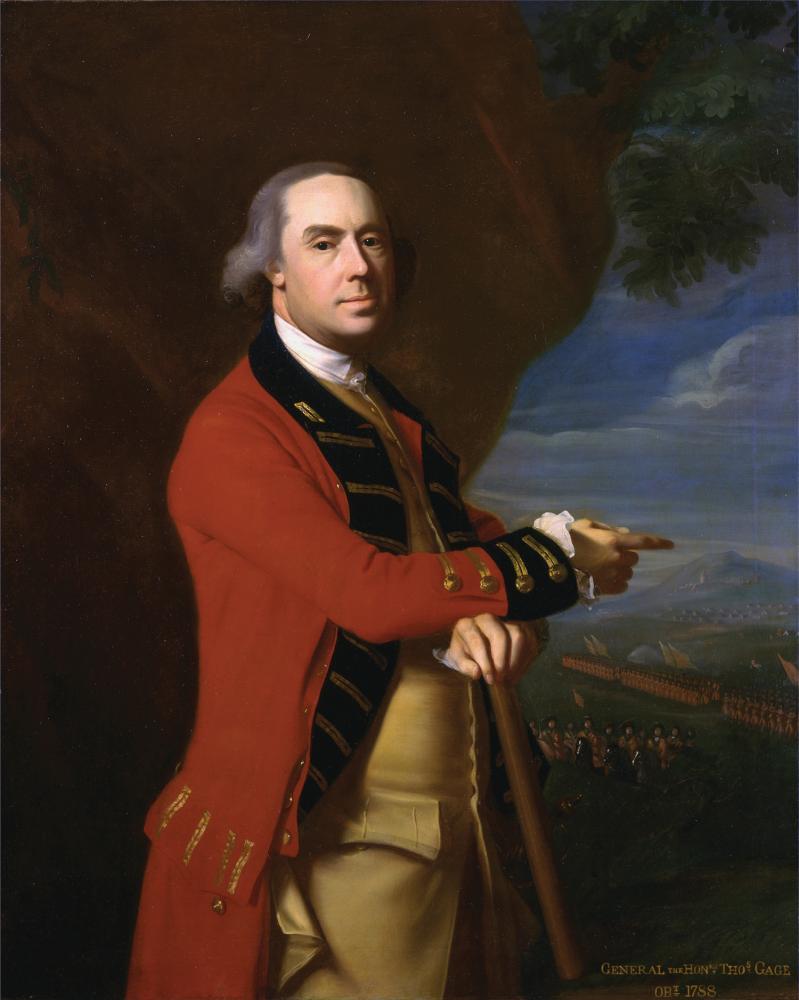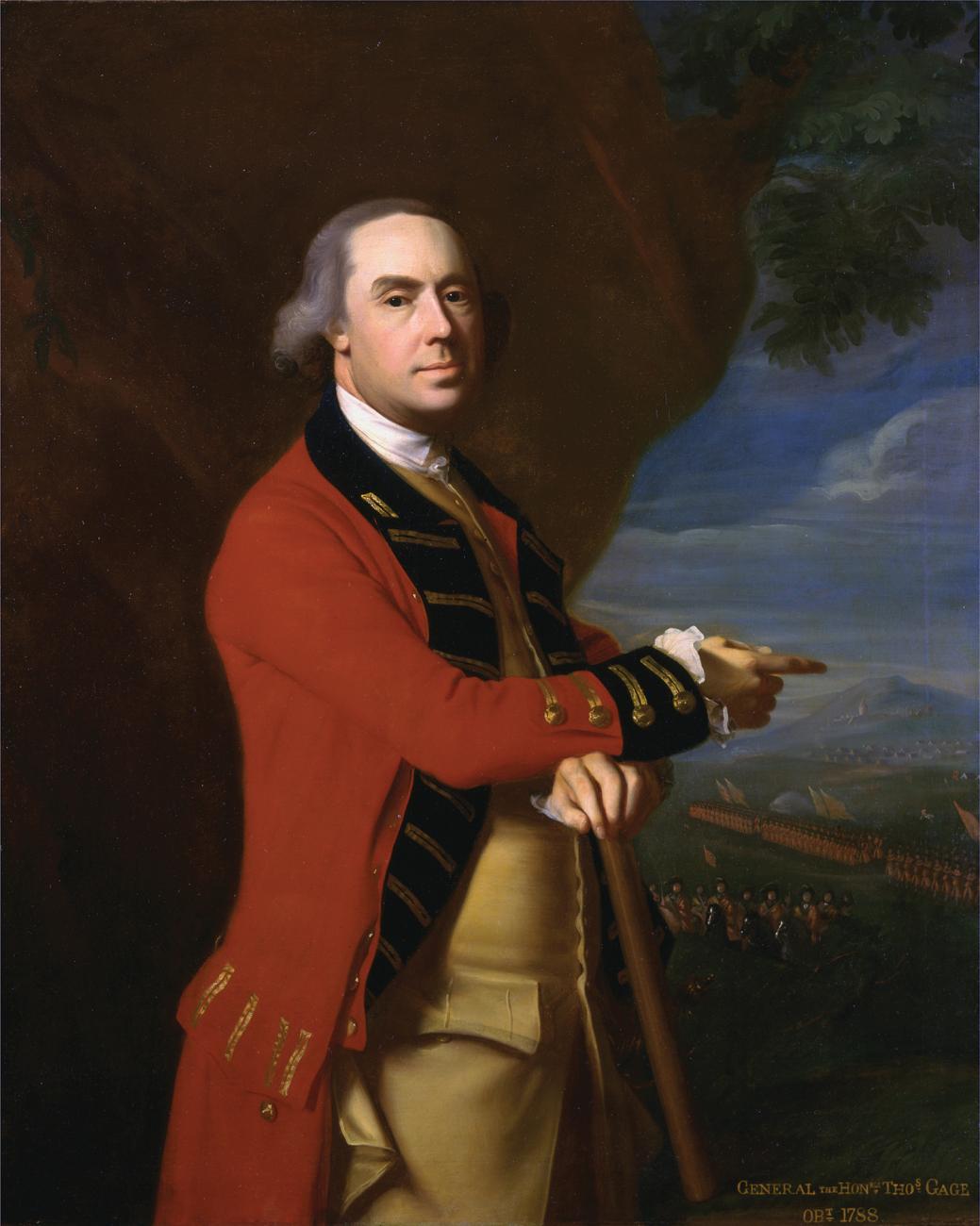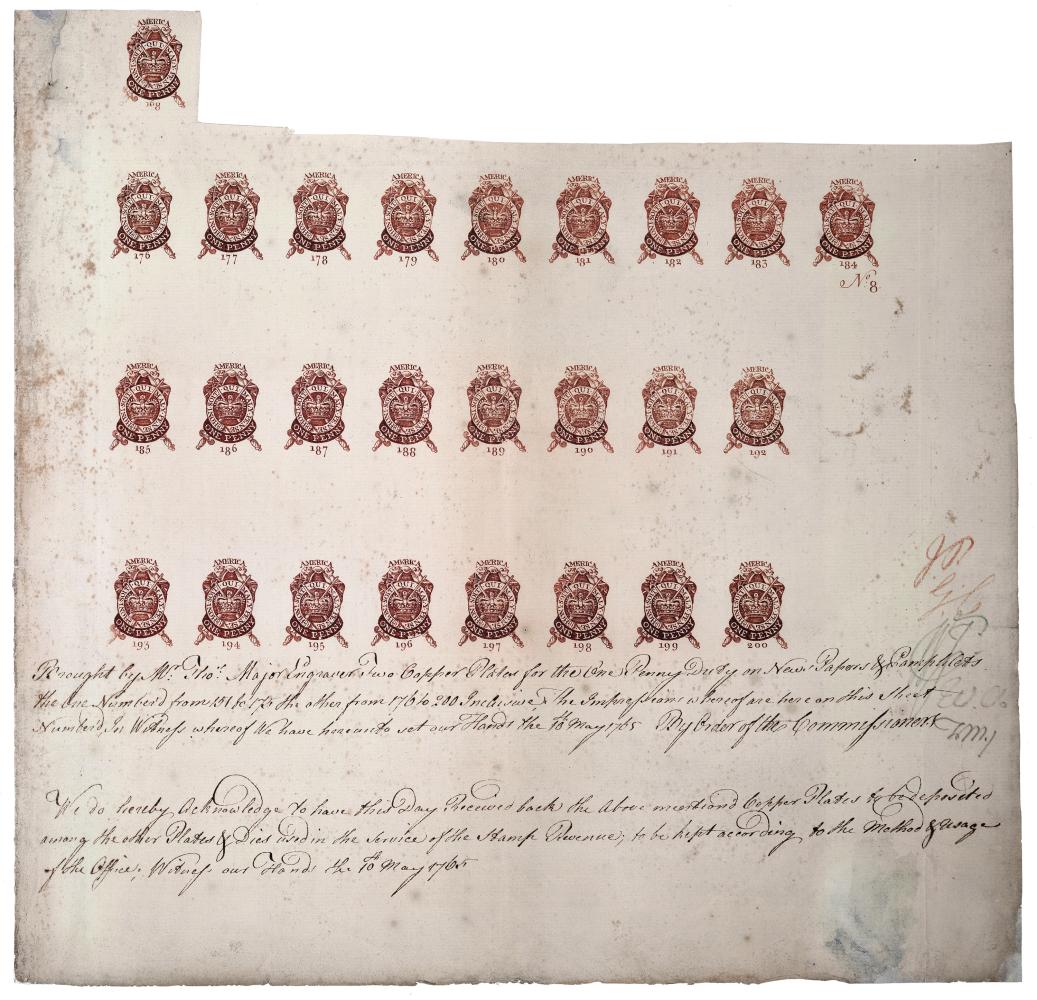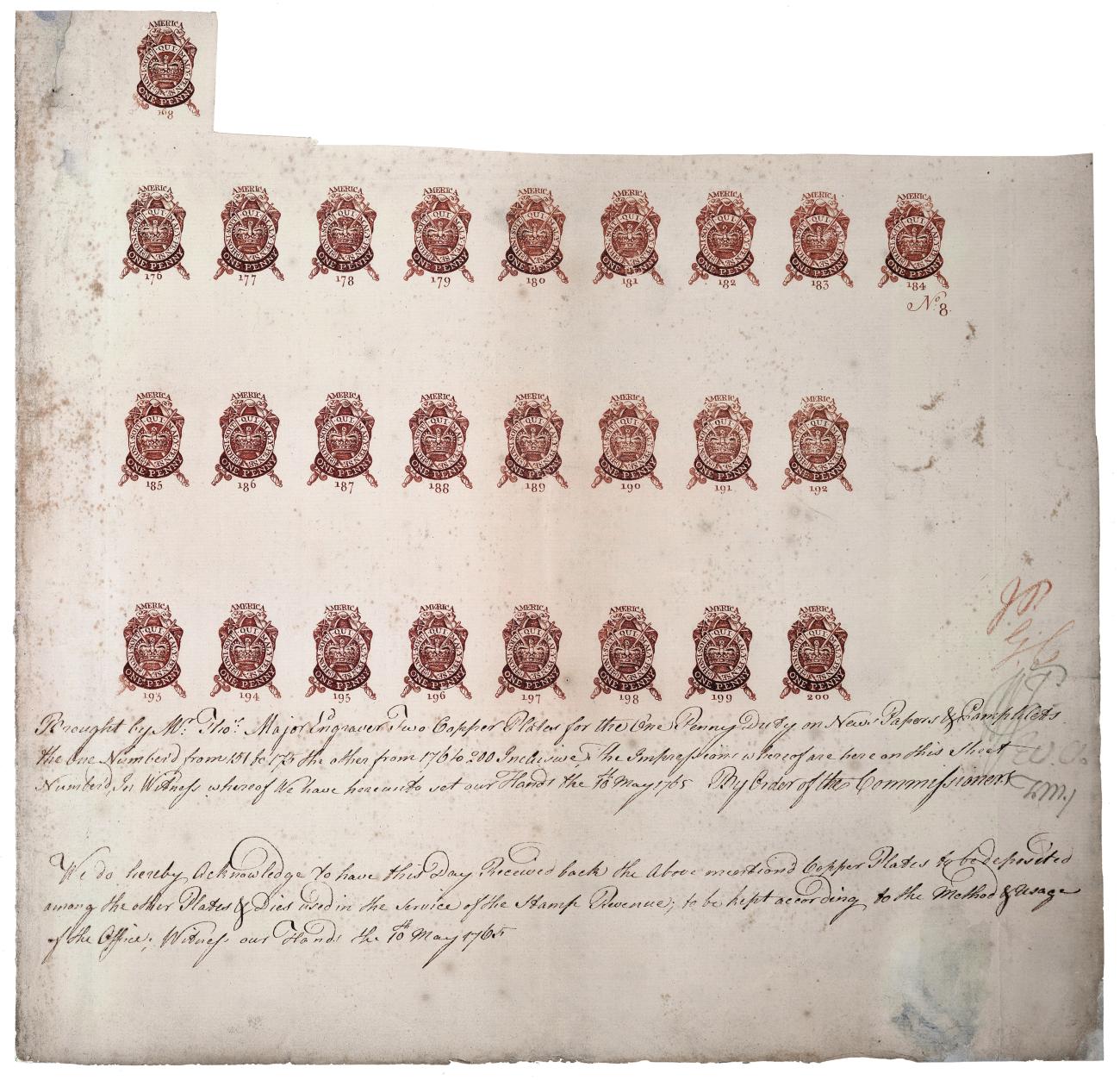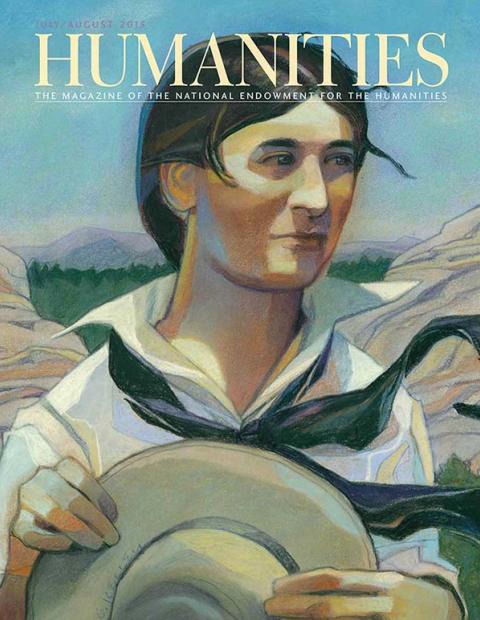John Trumbull’s painting Declaration of Independence is a classic depiction of history being made. From John Adams to Benjamin Franklin, all the key players appear to be in attendance. But are they?
In depicting only well-to-do white men, Trumbull ignored something like 95 percent of the people who participated in the American Revolution. Indians, slaves, small farmers, and women of all ranks played important roles when American colonists broke free of British control. In some cases, ordinary Americans very directly influenced the actions of the Founding Fathers. One little-known example involves a law Parliament passed two hundred fifty years ago. The Stamp Act, which took effect on November 1, 1765, was one of Britain’s most famous encroachments on colonial freemen’s rights. Its purpose, however, is little understood.
Contrary to popular myth, which has the British government adopting the Stamp Act to force Americans to pay down their share of its staggering debt, the real reason for the Stamp Act was to help fund a garrison of ten thousand British soldiers who remained in North America at the conclusion of an Anglo-French war in 1763. This was a sizable force: about the same number of troops Washington would have at Valley Forge fifteen years later.
Why weren’t these men sent home to Britain with their comrades? Thomas Gage, commander in chief of British forces in North America, explained in a December 1765 report to Lord Barrington, the secretary at war, that the redcoats had stayed behind because of “the Numerous Tribes of Savages who joined the French during the War, and over run our Frontiers.”
The Indian attacks of the 1750s and early 1760s shocked British officials as well as American colonists. Ever since Columbus’s time, natives had occasionally risen up against encroaching colonists—sometimes with rival colonizers as their allies. But for nearly a century, English and (after 1707) British monarchs had found, to their great relief, that whenever they went to war against their archrival, the king of France, they could count on significant native support in the American theater. That reassuring pattern, however, came to an abrupt halt during the conflict that is now widely viewed as history’s first global war.
It is known in Britain as the Seven Years’ War (since it officially began in 1756 and ended in 1763) and in Canada as the War of the Conquest (because during the war, in 1760, Britain captured Canada from France). Americans call it the French and Indian War because those two were the enemies, at least from a British perspective. For the first time ever, in fact, most of the Indian nations that participated in the interimperial conflict—including the Shawnee, Delaware, Miami Confederacy (on the Miami and Wabash rivers in present-day Ohio and Indiana), and the Anishinaabe in modern Michigan—took France’s side.
This left British officials determined to have at least some Indians at their side the next time they fought France. To be sure, Britain had captured Canada in 1760 without significant Indian support, but at great cost. Then as now, wars were by far the largest expense governments incurred, and the Seven Years’ War had almost doubled the British government’s debt. Imperial officials knew they would reduce their financial exposure in the next clash with France in proportion to the number of Indians who came in as their allies rather than their enemies.
But why had most Indians cast their lots with France? Imperial officials ended up attributing Indians’ animosity to two groups of Americans: fur traders and land thieves. For more than two hundred years, Europeans had traveled to America to sell manufactured goods to Native Americans in return for animal pelts. Many of these traders formed positive relationships with their customers and suppliers in the American interior. Some even married native women. On the other hand, relations between the Indians and the fur traders were often abusive. One common method of obtaining pelts at a favorable price was to trap natives in debt. In addition, General Gage accused British subjects who traded with the Indians of “making them drunk, and setting them one against another . . . which brought on Quarrells with the Provinces, and gave the Indians the Worst Opinion of all the English in General.”
Traders frequently used alcohol to lure Indians into signing fraudulent land deeds. In this they joined a crowded field, for territorial encroachment was another of the Indians’ principal grievances. Land fever pervaded colonial society. It infected individual settler families as well as large-scale speculators, such as George Washington, Thomas Jefferson, and Benjamin Franklin, all of whom dreamed of acquiring title to thousands of western acres and then dividing them up into smaller parcels for profitable sale.
At the close of the Seven Years’ War, the British government adopted two major policies aimed at appeasing the Indians. On October 7, 1763, the king-in-council issued a proclamation drawing an imaginary line along the crest of the Appalachian Mountains. All of the land west of this so-called “Proclamation Line” would be reserved for the Indians.
Nearly a year before adopting the Proclamation of 1763, the government had decided to leave twenty-one battalions behind in North America after the war. Some of these ten thousand soldiers were posted to the regions Britain had just conquered from France, especially Quebec, with its eighty thousand French-speaking colonists. Others went to Florida, which before the Seven Years’ War had been Spanish territory.
The government positioned nearly half of its new American garrison in Indian country. The redcoats were there partly to maintain British forts for use in future wars against France and Spain. But they also had more immediate goals, and one was to protect the colonists from the Indians. As General Gage recalled in 1765, “The forts were maintained at the Peace for the purposes of keeping the Indians in awe and Subjection.” By investing up front in a barrier between the colonists and the Native Americans, the government hoped to avoid the much larger expense of a war against the Indians and whatever European allies they might attract. The thin red line of British soldiers between Indian and British American villages was like an insurance policy—and the idea, at least, was for the colonists to pay the premiums.
But the single most important reason for the British government’s unprecedented decision to leave ten thousand troops in North America after the Seven Years’ War was not to guard the colonists against Indian incursions. Just the opposite. It was to protect the Indians from the colonists.
British forts would double as trading posts where transactions between native trappers and British fur merchants would take place under the watchful eyes of British officers. Fort commanders would also attempt to prevent colonists from encroaching on Indian land. Britain actually would have needed considerably more than ten thousand troops to hold back the tide of migration. But given the shared racial assumptions of British subjects on both sides of the Atlantic, it is amazing to discover imperial army units ranging the woods of western Pennsylvania and other regions in the 1760s, burning the cabins of dozens of British settlers who had squatted on Indian land.
In addition to combating abuse by traders and land pirates, the British garrisons in Indian country filled another need. France had had no designs on Indian farmland, and its traders had maintained notably better relations with the Indians, but French officials had also been much more willing than their British counterparts to engage in Indian diplomacy. Often the form these negotiations took was the exchange of presents. Historians disagree about why gifts of European merchandise mattered so much to Eastern Woodlands Indians. Some take a cultural approach, saying the presents signaled mutual respect. More practical-minded scholars point to the fact that many Indians were as dependent upon European merchandise as the Europeans themselves. They see the diplomatic gifts as helping to meet basic needs.
For whatever combination of reasons, the exchange of gifts had become an essential element in France’s Indian diplomacy. And one reason the British government decided to maintain such a large military presence in North America after the Seven Years’ War was to man the backcountry forts where these exchanges took place.
In the report he sent Lord Barrington in December 1765, General Gage explained the thinking behind “the Measures now taken.” The great predicament was that Britain had “lost our influence with the Nations” of Indians. Before and during the Seven Years’ War, British “Traders had made them drunk, and cheated them, thro’ the want of a well regulated trade, and People of Credit to Inspect the Traders.” In addition, British subjects “encroached upon their Lands.” The reason for “the present Plan of Forts, [of] treating the Indians, and of circumscribing the Limits of the Provinces” was “to avoid running into the same Errors.”
Although the British government’s primary motive for trying to bring the Indians back into its orbit was to avoid the expense of fighting them, everyone understood that the immediate beneficiaries of such a diplomatic coup would be the British colonists in North America, who would be able to farm their fields, raise their families, and even trade with the Indians without fear of being slaughtered. So it made practical and financial sense to send the bill for the ten thousand troops not to British taxpayers but to the colonists.
Whether the colonists agreed with this logic, especially as tax enforcement grew more aggressive, was another question. In the spring of 1763, Parliament initiated a campaign to crack down on Americans who smuggled commodities, such as Caribbean molasses, in order to evade customs duties. This culminated in parliamentary enactment of the Revenue Act of 1764, known in America as the Sugar Act. Its primary purpose, like the Stamp Act that followed, was to pay for the stationing of British soldiers.
Now, most of the ten thousand troops were stationed at forts, but some were placed in American cities. That is why Parliament, shortly after adopting the Stamp Act, passed the Quartering Act of 1765. Despite what many people believe, this legislation did not permit the billeting of British soldiers in private homes. In fact, as historian John G. McCurdy has shown, the Quartering Act was actually Parliament’s first-ever ban on billeting soldiers in colonists’ private homes. But the law did saddle colonial legislatures with much of the expense of feeding and housing the soldiers. In modern terms, the Quartering Act was an unfunded mandate.
Colonists objected to the Stamp Act and the Quartering Act for the same reason. Both extracted money from Americans without their consent, so both violated the principle of taxation without representation. Colonists rioted against the Stamp Act, forcing the resignations of nearly all of the men sent to enforce it. They also boycotted British merchandise, and, on March 4, 1766, the House of Commons voted to repeal the Stamp Act. But Parliament insisted at the same time that it had the right to legislate for the colonies “in all cases whatsoever.” So the struggle between colonies and crown was far from over. For example, in 1768, when Bostonians rioted against customs officials trying to crack down on smuggling by merchants like John Hancock, the British government transferred a portion of the American garrison from Halifax, Nova Scotia, to Boston. One result, on March 5, 1770, was the Boston Massacre, in which a squad of soldiers guarding the custom house killed five colonists.
Conflicted relations between Indians and the British government on the one hand and Indians and British colonists on the other had major consequences. Most significantly, Indians’ defense of their land indirectly caused colonists’ animosity against the imperial government to grow. By siding with France in the Seven Years’ War and then carrying out an uprising known as Pontiac’s Rebellion, Indians helped bring about the Proclamation of 1763. The resulting boundary was an imaginary line, and colonial families could not be prevented from settling in the western region reserved for the Indians. But the Proclamation of 1763 was highly effective in preventing land speculators such as Washington, Jefferson, and Franklin from taking title to their western claims. Without clear title, they could not sell land to settlers. The Proclamation of 1763 would remain in effect until the colonists declared independence—and defeated the mother country on the battlefield.
Indians also helped bring about the American Revolution in another way that has not received much attention. Had there been no Native Americans, the British government would not have felt the need to maintain a ten thousand-man military establishment in North America at the conclusion of the Seven Years’ War. And if this major financial burden had been removed, Parliament might never have adopted the Stamp Act.
*This article was updated on September 28, 2015, to correct an error in the first name of painter John Trumbull. Jonathan Trumbull was the name of his father.

